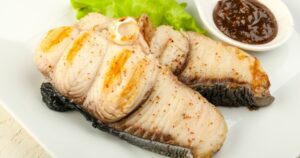Flounder’s taste compares to other popular white fish like halibut and tilapia, but it has its own unique appeal. The subtle sweetness and low oiliness make it a fantastic canvas for various seasonings and cooking methods.
Whether you’re a seasoned chef or a home cook, Flounder can elevate your dishes with its delightful taste and texture.
This article’ll explore its taste, texture, and the best ways to cook it to bring out its full potential.
How Does Flounder Taste?
When you first bite into a piece of Flounder, you’re met with a mild and subtly sweet flavor. It’s a gentle introduction, a whisper of the sea that doesn’t overpower your taste buds.

The sweetness of Flounder is not the sugary kind but a natural, delicate sweetness that’s like fresh seawater.
However, it’s worth noting that the taste can vary slightly depending on the type of Flounder and where it’s caught. Some varieties may have a more pronounced sweetness, while others lean towards a more neutral flavor.
Flounder has a fine, delicate texture that’s almost melt-in-your-mouth. The flaky, tender flesh of the Flounder pairs well with its mild, slightly sweet flavor.
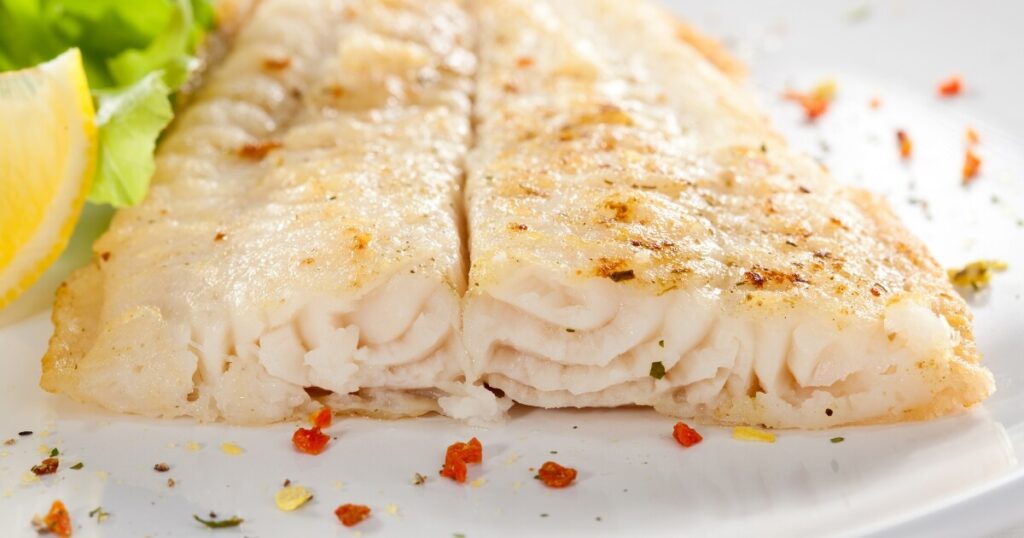
In its cooked form, whether it’s grilled, baked, or pan-fried, Flounder retains its mild flavor and delicate texture. It picks up the flavors of the ingredients it’s cooked with, making it a versatile choice for various dishes.
However, it’s important to handle and cook Flounder carefully to prevent it from falling apart and preserve its delightful taste and texture.
Varieties Of Flounder
Flounder is a term used to describe several flatfish species, and the taste can vary slightly among them. Here are a few common varieties:
- Summer Flounder (Fluke): Known for its lean and flaky texture, Summer Flounder has a mild sweetness that’s more pronounced than other varieties. It’s a popular choice for grilling and frying.
- Winter Flounder: This variety has a slightly firmer texture and a mild flavor. It’s often used in stews and chowders because it holds up well during cooking.
- Southern Flounder: Southern Flounder is known for its large size and rich flavor. It has a slightly stronger taste than other varieties but still maintains the characteristic sweetness of Flounder.
- European Flounder: This variety is found in Europe’s coastal waters and is appreciated for its delicate flavor and fine texture. It’s often served pan-fried or poached.
What Does Flounder Compare With?
Flounder’s taste and texture can be compared to several other types of fish. Here’s how it stacks up:
- Halibut: Both Flounder and Halibut have a mild, sweet flavor, but halibut is usually thicker and has a firmer texture.
- Tilapia: Tilapia and Flounder are both mild white fish, but tilapia has a slightly more pronounced flavor and a less flaky texture.
- Sole: Sole and Flounder are often compared due to their similar taste and texture. However, sole is usually more delicate and has a slightly more pronounced sweetness.
- Cod: Cod has a stronger flavor than Flounder and a denser texture. However, both are versatile and can be used in a variety of dishes.
Do Flounder Taste Fishy?
When it comes to the taste of Flounder, “fishy” is not a word that comes to mind. This is because Flounder is known for its mild flavor that’s more sweet than fishy.
It’s a great option for those not fond of the strong, distinct taste often associated with seafood.
The lack of a fishy taste in Flounder can be attributed to its diet and habitat.
Flounder, being a bottom-dwelling fish, feeds on a diet that contributes to its mild flavor. This makes it a popular choice among seafood enthusiasts and those just starting to explore the world of fish.
However, it’s worth noting that the freshness of the fish plays a significant role in its taste. A fresh flounder will not have a fishy taste, but an older, less fresh flounder might develop a stronger, fishier flavor.
Therefore, it’s always best to consume Flounder when it’s fresh to enjoy its true, mild flavor.
In terms of cooking, the mild flavor of Flounder makes it a versatile ingredient. It can be paired with a variety of seasonings and sauces without the fear of a fishy taste overpowering the dish.
Whether it’s a simple pan-fry or a more elaborate recipe, Flounder can shine without bringing a fishy taste to the table.
Do Flounder Smell Fishy?
The smell of Flounder is not overpowering or distinctly fishy. A fresh flounder has a mild, almost neutral smell. This lack of a strong smell makes Flounder a favorite among many home cooks and chefs.
If your Flounder has a strong, unpleasant smell, it’s likely, not fresh and should be avoided.
The mild smell of Flounder also contributes to its overall taste experience.
Since our sense of taste is closely linked to our sense of smell, the lack of a fishy smell allows the subtle flavors of Flounder to shine through when you taste it. This makes eating flounder a pleasant experience for both the nose and the palate.
An older flounder might develop a fishy smell, affecting its taste. Therefore, when buying Flounder, it’s important to check both the smell and the appearance to ensure you’re getting fresh fish.
What Do Flounder Look Like?
Flounders are unique and easily recognizable due to their distinct physical characteristics. When you first see a flounder, its flat body is one of the most striking features.
Unlike most fish with a more rounded or streamlined shape, Flounder have a flat, oval-shaped body designed for life at the bottom of the ocean.

The color of a flounder can vary depending on its species and habitat. Most Flounders have a dark side and a white side.
The dark side, which is usually brown or gray, is the side that faces upwards when the Flounder is in the water, helping it blend in with the ocean floor.
Another interesting feature of Flounder is their eyes. Both of their eyes are located on the dark side of their body.

This unusual eye placement is a result of a fascinating transformation that Flounder undergo during their growth, where one eye migrates to the other side of the body.
When it comes to size, some species of Flounder can grow quite large, reaching lengths of over 20 inches, while others are smaller.
Regardless of their size, all Flounder share the same flat body, unique eye placement, and two-toned coloration, making them one of the most distinctive fish in the sea.
How To Eat Flounder
Flounder can cater to your culinary preferences, whether you’re a fan of simple, straightforward preparations or more complex, gourmet dishes.
Grilled Flounder
Grilling is a popular method for cooking Flounder. The grill’s high heat sears the fish’s outside, giving it a slightly crispy exterior, while the inside remains tender and flaky.
Grilled Flounder can be served with fresh lemon juice and a sprinkle of fresh herbs for a light, flavorful meal.
Baked Flounder
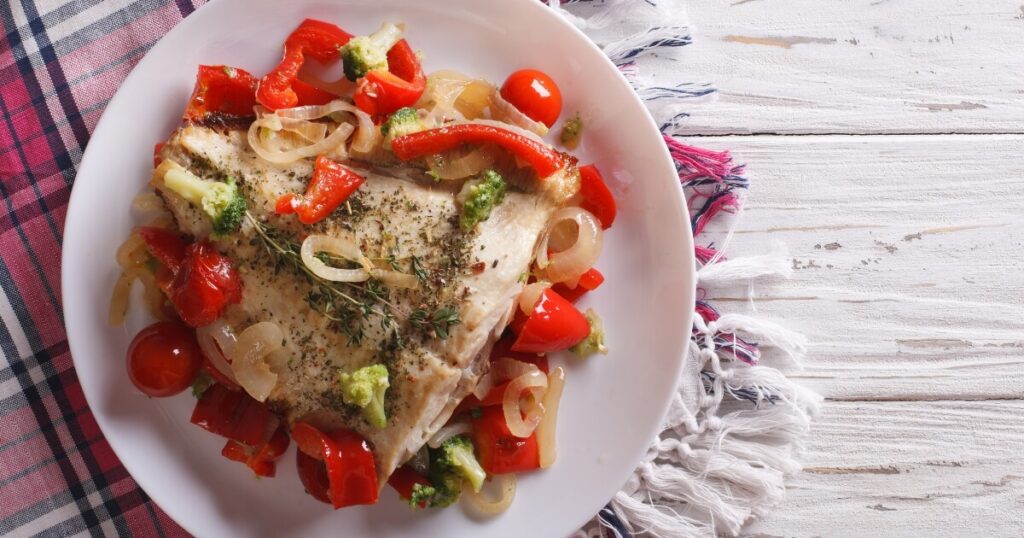
Baking is another great way to prepare Flounder. This method allows the fish to cook evenly in its own juices, resulting in a moist, flavorful dish.
Baked Flounder can be seasoned with a variety of spices and herbs, and it pairs well with a side of fresh vegetables or a light salad.
Pan-Fried Flounder
Pan-frying is a quick and easy way to cook Flounder. The fish is usually dredged in flour or breadcrumbs and then fried in a hot pan until golden brown.
Pan-fried Flounder has a slightly crispy exterior and a tender, flaky interior. It’s often served with a side of tartar sauce or a squeeze of fresh lemon.
Flounder in Soups and Stews
Flounder can also be used in soups and stews. Its delicate flavor adds a subtle seafood taste to the dish without overpowering the other ingredients.
Flounder is a common ingredient in seafood chowders and bisques, where it’s cooked until tender and flaky.
How To Make Flounder Taste Good
Flounder is a delicious fish on its own, but several ways exist to enhance its flavor and make it taste even better.
Use Fresh Ingredients
The freshness of the Flounder and the ingredients you use can significantly impact the final taste of the dish. Always choose fresh Flounder and high-quality ingredients for the best flavor.
Season Well
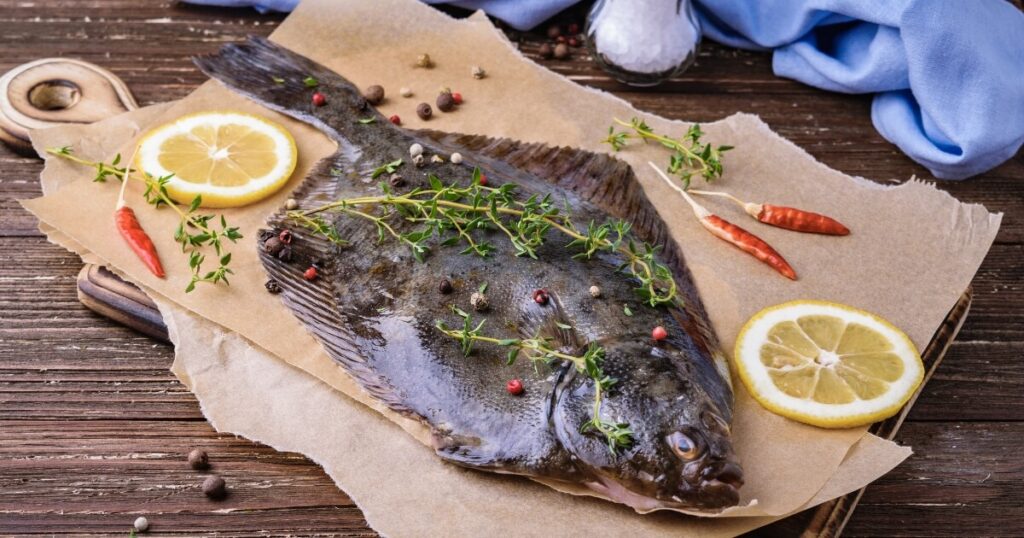
Flounder has a mild flavor, so it benefits from good seasoning. Salt and pepper are a must, but don’t be scared to experiment with other spices and herbs. Garlic, onion, dill, and parsley all pair well with Flounder.
Don’t Overcook
Flounder is a delicate fish that can easily become dry and tough if overcooked. Cook it just until the flesh is opaque and flakes easily with a fork. This will ensure that the Flounder remains tender and juicy.
Use Acid
A squeeze of lemon or a splash of white wine can enhance the flavor of Flounder. The acidity helps balance the mild sweetness of the fish and adds a refreshing note to the dish.
Pair with Complementary Sides
The sides you serve with Flounder can also enhance its taste. Light and fresh sides like a green salad, roasted vegetables, or a grain like quinoa or rice can complement the flavor of the Flounder without overpowering it.
Try Different Cooking Methods
Different cooking methods can bring out different flavors and textures in Flounder. Try grilling, baking, pan-frying, or poaching Flounder to determine your preferred method. Each method offers a unique taste experience.
How To Buy Flounder
When buying Flounder, there are several factors to consider to ensure you’re getting fresh and high-quality fish.
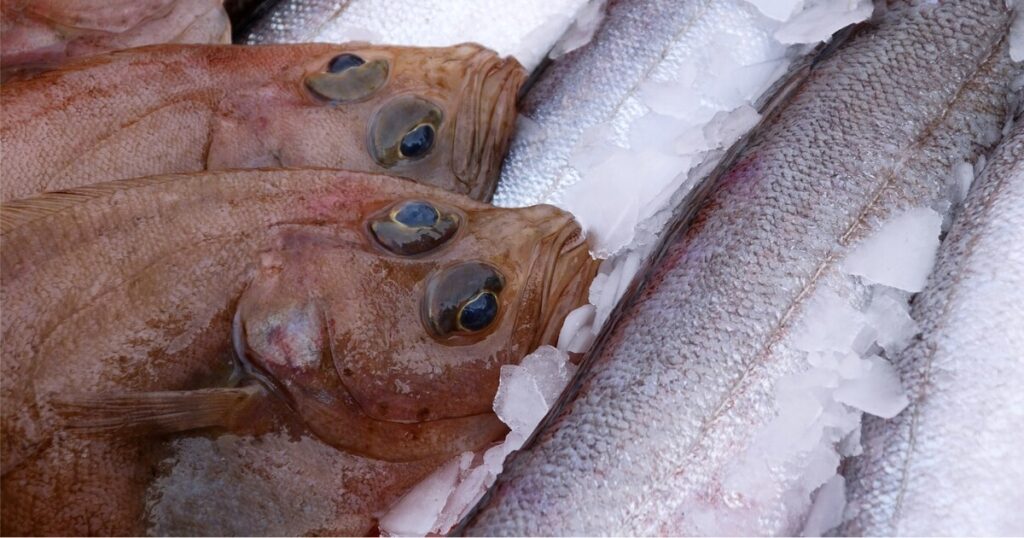
Whether you’re buying from a grocery store, a fish market, or ordering from a restaurant, here are some tips to guide you:
Check the Appearance
A fresh flounder should have a shiny, slippery surface with no discoloration or dry spots. The eyes should be clear and bulging, not cloudy or sunken. The gills should be bright red, and the skin should bounce back quickly when pressed.
Smell the Fish
Fresh Flounder should have a mild, ocean-like smell. It should not have a strong, fishy odor. If the fish smells overly fishy or has an off-putting smell, it’s likely not fresh.
Look at the Display
When buying Flounder from a store or market, pay attention to how the fish is displayed. It should be properly iced to maintain its freshness. Avoid fish that is piled high or not properly chilled.
Ask About the Source
It’s always a good idea to ask where the Flounder comes from. Flounder caught in clean and cold waters is usually of higher quality. If the seller can’t provide this information, it might be best to buy elsewhere.
Other Names for Flounder
Flounder is also known by several other names, depending on the specific species and region. Some common names include flatfish, fluke (for Summer Flounder), and plaice.
In a restaurant, Flounder might be listed under these names or simply as “white fish.”
